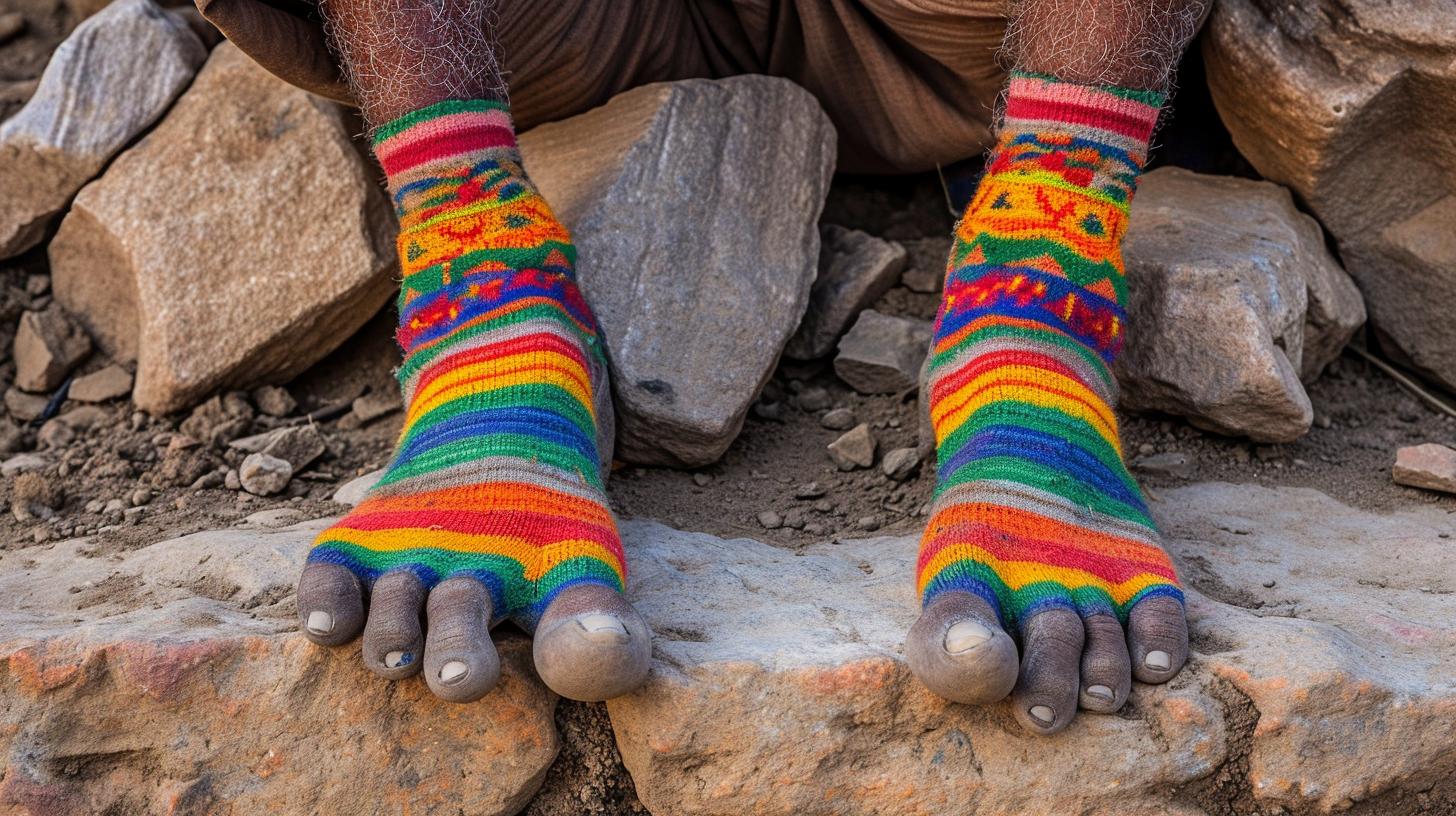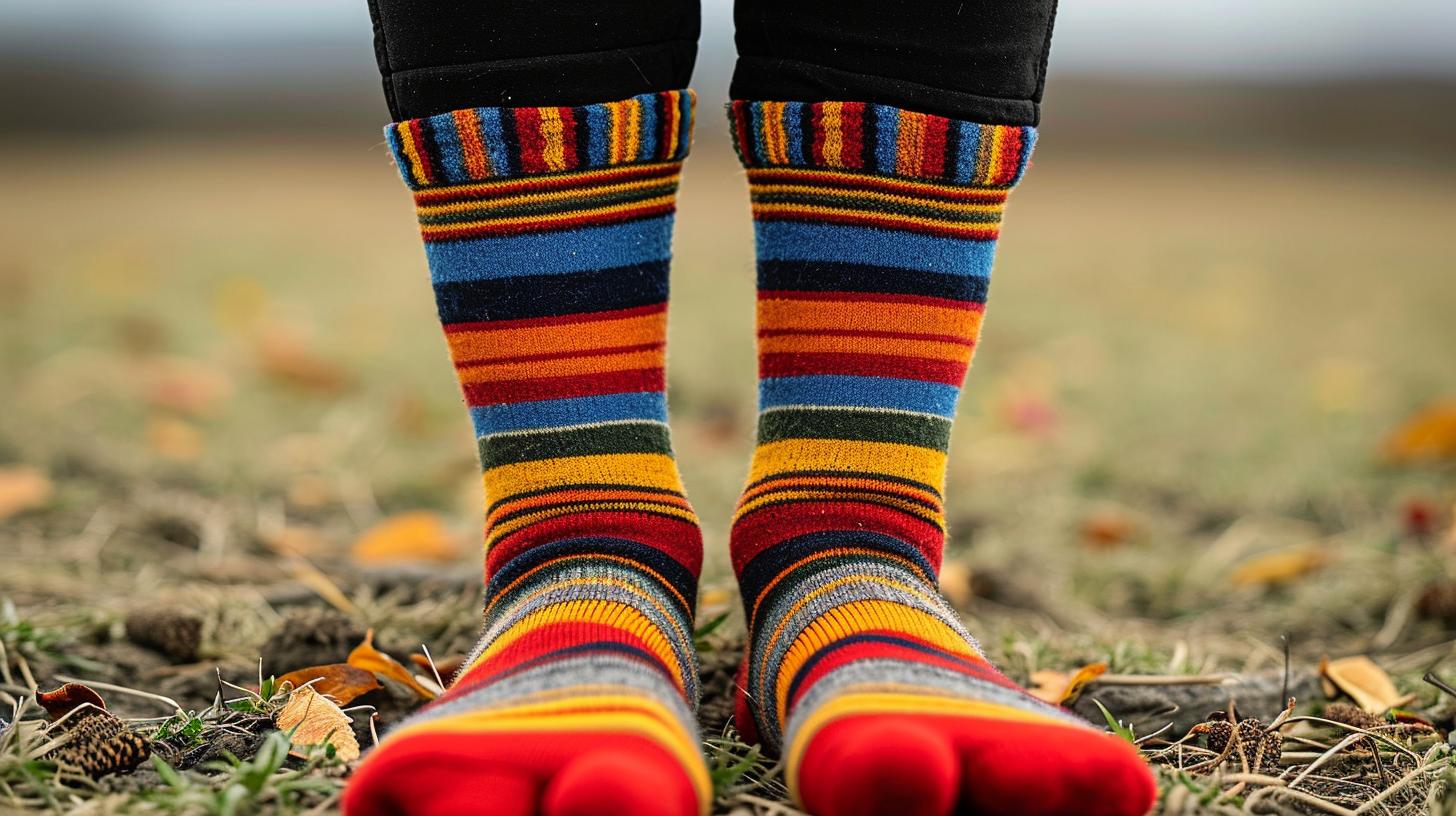
Health socks are an essential component of foot care and overall well-being. Taking care of our feet is often overlooked, but it plays a crucial role in our daily lives. From carrying us through our day-to-day activities to bearing the weight of our bodies, our feet are constantly under pressure. This section will discuss the significance of foot health and how health socks can contribute to it.
Ensuring good foot health is vital for maintaining an active and fulfilling lifestyle. Our feet provide the foundation for movement, balance, and stability, making them an integral part of overall physical health. Neglecting foot care can lead to various issues such as discomfort, pain, and even injury, which can significantly impact our quality of life.
Common foot health issues such as blisters, calluses, fungal infections, and odor can be uncomfortable and disruptive. People who suffer from conditions like diabetes or arthritis also face specific challenges when it comes to foot care. The right footwear and socks play a significant role in preventing and managing these issues. This section will delve into the various ways in which foot health problems can be addressed through proper sock selection.
Having the right pair of health socks can provide numerous benefits that contribute to better foot health. These include improved circulation, moisture-wicking properties, cushioning for impact absorption, anti-microbial features to prevent odors and infections, and support for arches and heels. Recognizing these advantages is crucial for understanding the importance of investing in high-quality socks designed specifically for promoting good foot health.
Understanding the different types of health socks available on the market is essential for selecting the most suitable option for individual needs. From compression socks to diabetic socks to moisture-wicking athletic socks, each type serves unique purposes in addressing specific foot health concerns. In this section we will explore these different options along with their distinct functionalities.
Common Foot Health Issues
It is essential to pay attention to foot health as it can impact our overall well-being. There are various common foot health issues that people encounter, and it is crucial to address these issues to maintain healthy feet. Here are some of the most prevalent foot health issues:
- Foot Odor: This occurs when sweat buildup leads to bacteria growth on the feet, causing an unpleasant odor.
- Ingrown Toenails: When the corners or sides of a toenail grow into the skin, it can cause pain, redness, swelling, and even infection.
- Athlete’s Foot: This is a fungal infection that causes itching, burning, and cracked skin between the toes.
- Blisters: Friction and pressure on the skin from ill-fitting shoes or repetitive rubbing can lead to painful blisters.
- Plantar Fasciitis: This condition involves inflammation of the tissue on the bottom of the foot, leading to heel pain.
These foot health issues can be uncomfortable and even debilitating if not properly addressed. However, one way to help prevent and alleviate some of these issues is by using health socks.
Health socks are specifically designed to promote foot health and address common foot problems. These specialized socks offer several benefits that contribute to overall well-being:
- Moisture-wicking properties keep feet dry and reduce the risk of odor and fungal infections.
- Cushioning and padding provide comfort while minimizing friction and pressure that lead to blisters.
- Arch support helps with proper alignment and reduces strain on the plantar fascia.
There are different types of health socks available in the market, each catering to specific needs such as diabetic-friendly socks for individuals with diabetes or compression socks for improved circulation. Choosing the right type of health sock depends on individual requirements and preferences. It is important to consider features such as material, fit, cushioning, arch support, and seam construction when selecting health socks for personal use.
By addressing common foot health issues through proper care and utilizing supportive footwear like health socks, individuals can prevent discomfort, improve mobility, and enhance their overall quality of life. Proper foot care practices combined with the use of suitable health socks play a significant role in promoting optimal foot health.
Benefits of Health Socks
Health socks are specifically designed to promote foot health and provide numerous benefits to the wearer. These specialized socks go beyond regular socks by incorporating advanced features that support overall foot well-being. In this section, we will explore the various advantages of health socks and how they contribute to maintaining optimal foot health.
Improved Circulation and Blood Flow
One of the key benefits of health socks is their ability to improve circulation and blood flow in the feet. Many health socks are designed with graduated compression, which helps promote better circulation by applying pressure that is tightest at the ankle and gradually decreases towards the top of the sock. This compression assists in pushing blood back up from the feet towards the heart, reducing swelling and preventing conditions such as edema and deep vein thrombosis.
Moisture-Wicking and Odor Control
Another advantage of health socks is their moisture-wicking properties, which help keep the feet dry and comfortable. High-quality health socks are often made from materials that effectively wick away sweat, preventing moisture buildup that can lead to odors, blisters, and fungal infections such as athlete’s foot. Additionally, some health socks are treated with antimicrobial agents to control odor-causing bacteria, ensuring fresher and healthier feet.
Enhanced Support and Cushioning
Health socks are engineered to provide enhanced support and cushioning for the feet, making them ideal for individuals who spend long hours on their feet or engage in high-impact activities. The unique padding and targeted compression zones in these socks help reduce fatigue, minimize impact during movement, and alleviate discomfort caused by standing or walking for extended periods. This added support can also benefit individuals with foot conditions such as plantar fasciitis or arthritis.
Prevention of Foot Problems
By promoting proper alignment and providing adequate support, health socks can help prevent a range of common foot problems. From reducing the risk of developing blisters, calluses, and corns to offering arch support that prevents overpronation or supination, these specialized socks play a proactive role in maintaining foot health. For individuals with specific foot issues or those looking to avoid potential problems altogether, investing in high-quality health socks can make a significant difference.
In addition to these benefits, wearing health socks may also contribute to improved posture, reduced muscle fatigue in the legs, ankles, and feet-especially after prolonged periods of standing-and overall comfort throughout the day. Whether for athletic performance or everyday wear, choosing health socks tailored to individual needs can positively impact foot health while promoting general well-being.
Different Types of Health Socks
The Importance of Foot Health is crucial for overall well-being, as the feet are often the most neglected part of the body. Common Foot Health Issues such as blisters, calluses, and fungal infections can be uncomfortable and even debilitating. Therefore, finding ways to alleviate these issues is important.
One solution to addressing foot health concerns is through the use of Health Socks. These specially designed socks offer numerous Benefits of Health Socks including moisture-wicking properties, antibacterial materials, cushioned soles, seamless toes, and arch support. These features work together to promote better foot health by reducing friction and preventing the growth of bacteria and fungi.
Different Types of Health Socks cater to specific needs. For example, diabetic socks have extra padding and non-binding tops to reduce the risk of foot injuries and protect against ulcers. Compression socks are designed to improve circulation and reduce swelling in the lower extremities. Meanwhile, moisture-wicking socks keep feet dry and are particularly beneficial for athletes or those with hyperhidrosis.
Choosing the Right Health Socks for You depends on your specific foot health needs and lifestyle. Someone who spends long hours standing or walking would benefit from compression socks, while someone with diabetes may need specialized diabetic socks. It’s important to consider not only the materials used but also the fit and level of support offered by different types of health socks.

In summary, taking care of your feet with the right type of health socks is an essential part of maintaining good overall health. By choosing appropriate health socks for your specific needs, you can prevent common foot health issues and improve comfort throughout the day.
| Types of Health Socks | Main Features |
|---|---|
| Diabetic Socks | Extra padding, non-binding tops |
| Compression Socks | Improves circulation, reduces swelling |
| Moisture-Wicking Socks | Keeps feet dry |
How Health Socks Work
Compression
Health socks work by providing compression to the feet and lower legs. This compression helps to improve blood circulation, reduce swelling, and prevent fatigue. The pressure applied by health socks also helps to support the muscles and reduce muscle soreness during physical activity.
Moisture-Wicking
Many health socks are made with moisture-wicking materials that help to keep the feet dry and comfortable. By wicking away moisture, these socks can prevent the development of blisters and fungal infections, which are common foot health issues.
Cushioning
Health socks often come with extra cushioning in specific areas such as the heel, arch, and toes. This cushioning provides added comfort and support, reducing impact on the feet while walking or engaging in physical activities. It also helps to prevent friction and rubbing that can lead to discomfort and pain.
Temperature Regulation
Some health socks are designed with special fabrics that help regulate temperature, keeping the feet cool in hot weather and warm in cold weather. This feature not only enhances comfort but also promotes overall foot health by preventing excessive sweating or exposure to extreme temperatures.
Preventing Odor
Certain health socks are treated with antibacterial or odor-resistant properties to keep the feet fresh and free from unpleasant odors. By preventing the growth of odor-causing bacteria, these socks contribute to maintaining good foot hygiene and overall well-being.
Overall, health socks work by addressing various factors that contribute to foot health issues, including poor circulation, moisture build-up, lack of support, temperature discomfort, and bacterial growth. By incorporating these features into their design, health socks can have a significant impact on promoting healthier, more comfortable feet for individuals of all ages and activity levels.
Features to Look for in Health Socks
When it comes to choosing the right health socks for your needs, there are several key features to look out for. These features can make a significant difference in the level of comfort and support that the socks provide, ultimately contributing to the overall health of your feet.
One important feature to consider is the material of the health socks. Look for socks made from breathable and moisture-wicking fabrics such as merino wool or synthetic blends. These materials can help prevent excessive sweating and keep your feet dry, reducing the risk of developing fungal infections such as athlete’s foot.
Another essential feature to look for is cushioning and support. Health socks with additional padding in the sole, heel, and toe areas can provide extra comfort and reduce pressure on the feet, especially during long periods of standing or walking. Some health socks also come with arch support to help alleviate discomfort caused by flat feet or high arches.
Seamless toe construction is another feature that can contribute to the overall comfort of health socks. Socks with a seamless toe design minimize friction and irritation, reducing the risk of blisters and chafing. This feature is particularly beneficial for individuals with sensitive skin or those prone to developing corns and calluses.

Compression is also an important aspect to consider when choosing health socks. Graduated compression socks can improve blood circulation in the legs and reduce swelling, making them beneficial for individuals who spend long hours sitting or standing. Additionally, compression socks can aid in preventing deep vein thrombosis (DVT) during long flights or car rides.
Lastly, look for health socks that offer antimicrobial properties. These socks are designed to inhibit the growth of odor-causing bacteria and fungi, keeping your feet fresh and hygienic throughout the day. Antimicrobial health socks are particularly beneficial for individuals prone to foot odor or those with conditions such as diabetes that require extra attention to foot hygiene.
Overall, paying attention to these key features when selecting health socks can significantly impact your overall foot health and well-being.
Choosing the Right Health Socks for You
When it comes to choosing the right health socks for you, there are several factors to consider in order to ensure that you are getting the most benefit for your foot health. The first step is to determine what specific foot health issues or concerns you may have. Whether it’s dealing with athlete’s foot, odor, or simply wanting to improve circulation, there are health socks designed for a variety of needs.
One of the most important things to look for when choosing health socks is the material they are made from. Natural fibers such as merino wool, bamboo, and cotton are breathable and moisture-wicking, making them ideal for maintaining healthy feet by preventing sweat and bacteria buildup. Additionally, some health socks are infused with antimicrobial properties to further combat odors and fungal infections.
The fit of the health socks is also crucial in determining their effectiveness. Look for options that provide ample cushioning and support in key areas like the heel and arch. A proper fit not only ensures comfort but also helps reduce the risk of blisters and hot spots. Compression health socks can also be beneficial for those with circulation issues or who spend long hours on their feet.
Another important consideration when choosing health socks is their intended use. For everyday wear, seamless toe construction and moisture management properties may be more important than if you were selecting athletic performance health socks where breathability and support would be key factors.
It’s also worth noting that some brands offer specialized features such as graduated compression, extra padding in high-impact zones, or even infrared technology to promote blood flow. Ultimately, choosing the right health socks will depend on your individual needs and lifestyle, so take the time to research different options before making a purchase.
Taking care of your feet with proper footwear can greatly contribute to overall well-being. By investing in quality health socks that cater to your specific needs, you can help prevent common foot issues and improve your overall foot comfort and function.
Tips for Proper Foot Care
Proper foot care is crucial for overall health and well-being. Taking care of your feet can prevent various foot health issues such as corns, calluses, and even more serious conditions like plantar fasciitis or fungal infections. In addition to regular hygiene practices like washing and drying your feet thoroughly, wearing the right footwear, and using orthotic inserts if necessary, there are specific tips that can help you maintain healthy feet.
Here are some tips for proper foot care:
1. Trim your toenails regularly: Trim your nails straight across to prevent ingrown toenails. Be sure not to cut them too short or round the edges as this can lead to painful ingrowth.
2. Wear properly fitted shoes: Wearing shoes that are too tight or don’t provide enough support can lead to foot problems. Ensure that your shoes have enough room in the toe box and provide adequate arch support.
3. Moisturize your feet: Just like the rest of your skin, your feet need moisture too. Dry, cracked skin on the heels and soles of your feet can be painful and even lead to infection.
4. Rotate shoes: Wearing the same pair of shoes every day can cause excess pressure on certain areas of your feet, leading to discomfort and potential injury. Rotate between different pairs of shoes to give your feet a break.
5. Consider using Health Socks: Investing in a good pair of health socks with moisture-wicking properties and cushioned soles can make a big difference in maintaining foot health. Health socks offer various benefits like improved circulation, odor control, and reduced friction, which can help prevent common foot problems.
By incorporating these tips into your daily routine, you can ensure that you are taking proactive steps towards maintaining healthy and happy feet while also improving your overall well-being.
Conclusion
In conclusion, the impact of health socks on overall well-being cannot be overstated. As discussed throughout this article, foot health is essential to our overall health and well-being. Common foot health issues can significantly impact our daily lives, making it crucial to take proper care of our feet. Health socks play a vital role in maintaining foot health and preventing potential issues.
The benefits of health socks are numerous and varied. From providing cushioning and support to improving circulation and reducing discomfort, these specialized socks offer a range of advantages for individuals of all ages. Whether you are an athlete looking for performance-enhancing gear or someone with specific foot concerns, there is a type of health sock available to meet your needs.
When selecting the right health socks for you, it’s important to consider several factors such as material, fit, cushioning levels, and moisture-wicking properties. By choosing the appropriate features in your health socks, you can ensure that your feet are properly protected and supported throughout the day.
Proper foot care goes hand in hand with the use of health socks. By incorporating good hygiene practices and regular maintenance into your daily routine, you can maximize the benefits of wearing health socks. This includes keeping your feet clean and dry, wearing proper footwear, and inspecting for any changes or abnormalities on a regular basis.
In essence, taking care of your feet by investing in high-quality health socks can have a significant positive impact on your overall well-being. These specialized socks not only provide comfort but also contribute to maintaining good foot health. By understanding the importance of foot care and utilizing the benefits of health socks, individuals can experience improved mobility, reduced discomfort, and enhanced overall quality of life.






